views
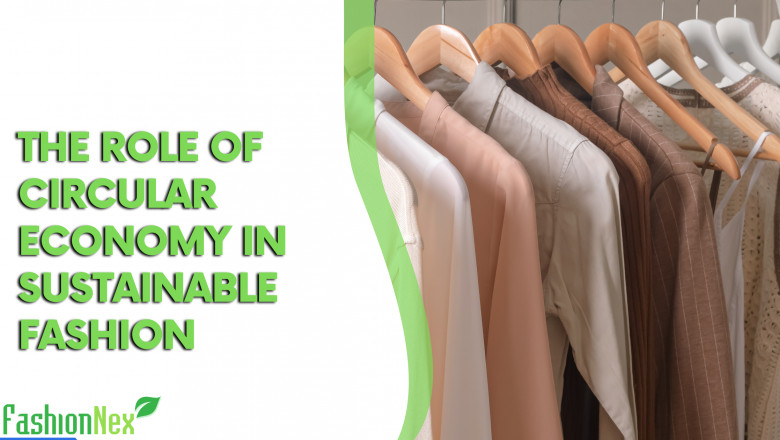
Circular economies are becoming more popular across a range of industries, including fashion. Resources are used and managed in a circular economy to minimize waste and increase their worth over time. It departs from the conventional linear model of production and consumption, which calls for the extraction of resources, the production of products, and the eventual disposal of trash.
When discussing sustainable fashion, the circular economy is especially important. From resource depletion to waste production, the fashion industry is infamous for having a large negative influence on the environment. The fashion industry may escape this unsustainable tendency by adopting circularity. It entails making use of recyclable and renewable materials, putting in place an effective recycling infrastructure, and promoting secondary markets and product reuse.
It is impossible to exaggerate the value of a circular economy for sustainable fashion. It can eliminate waste, lessen pollution, save resources, and spur innovation. We can build a more resilient and sustainable sector that respects planetary boundaries and advances long-term social and environmental well-being by switching to a circular fashion system.
Reduce, Reuse, Recycle: The Three Pillars of Circular Economy
The three pillars of the circular economy, reduce, reuse, and recycle, hold great potential for transforming the fashion industry into a more sustainable and environmentally conscious sector.
Firstly, the principle of reducing aims to minimize waste and consumption. This can be achieved through various means such as designing durable and long-lasting garments, implementing efficient production processes, and promoting responsible consumer behavior. By reducing the production and consumption of fashion items, we can significantly decrease the industry's negative impact on the environment.
Secondly, the concept of reuse emphasizes the promotion of second-hand clothing and rental services. Encouraging the reuse of garments prolongs their lifespan and reduces the need for new production. Thrift stores, online marketplaces for pre-loved fashion, and clothing rental platforms are excellent examples of initiatives that support the reuse principle.
Lastly, textile recycling and upcycling play a vital role in the circular economy. By recycling fabrics and materials, we can reduce the amount of waste sent to landfills and conserve valuable resources. Upcycling, on the other hand, involves transforming discarded items into new and unique products, giving them a new lease on life.
By embracing the principles of reducing, reusing, and recycling, the fashion industry can transition towards a more sustainable model, minimizing its environmental footprint and fostering a more responsible and ethical approach to fashion consumption.
Benefits of Circular Economy in Sustainable Fashion
The circular economy has many advantages for the sustainable fashion industry. First off, it significantly improves the environment by lowering resource extraction and waste production. Utilizing techniques like recycling, upcycling, and garment refurbishment minimizes the demand for new raw materials, preserving natural resources and lessening the negative environmental effects of the fashion industry.
Second, the circular economy offers financial advantages to enterprises and local communities. Generating new employment opportunities in fields like recycling, repair, and remanufacturing, helps the sustainable fashion industry expand. Additionally, businesses can encourage innovation and create new technologies and procedures that maximize resource efficiency by implementing circular business models.
Thirdly, the circular economy has significant social benefits. It promotes improved working conditions throughout the supply chain by encouraging fair labor practices, ethical sourcing, and responsible manufacturing. Additionally, by supporting local communities through initiatives like localized production and supply chains, the circular economy strengthens local economies and fosters social cohesion.
In summary, sustainably embracing the circular economy not only addresses environmental concerns but also yields economic and social advantages. It paves the way for a more sustainable and inclusive industry that respects the planet, empowers communities, and drives innovation.
Successful Examples of Circular Economy in Fashion
Closed-loop production systems have gained traction in the fashion industry, with several brands implementing recycling programs to minimize waste and maximize resource efficiency. Companies like Patagonia and EILEEN FISHER have established take-back programs, where customers can return old garments to be recycled into new products. These closed-loop systems not only reduce the environmental impact but also create a sustainable supply chain by reusing materials.
Collaborative consumption models have emerged as a promising trend in the fashion industry. Sharing platforms and rental services such as Rent the Runway and Le Tote enable consumers to access high-quality garments without the need for constant ownership. By promoting the sharing economy, these models encourage extended product lifecycles, reduce overconsumption, and minimized waste generation. They offer individuals the opportunity to experiment with different styles while significantly reducing their ecological footprint.
Upcycling and creative design initiatives have been gaining attention in the fashion world. Designers and organizations are transforming waste materials into unique fashion treasures. Examples include the work of designer Stella McCartney, who uses innovative vegan materials and upcycled fabrics, and the Remake organization, which promotes sustainable fashion through upcycling workshops and awareness campaigns. By reimagining waste as a valuable resource, these initiatives showcase the artistic potential of circular fashion and inspire others to embrace sustainable design practices.
These successful examples highlight the tangible possibilities of a circular economy in the fashion industry. By implementing closed-loop production systems, fostering collaborative consumption models, and encouraging upcycling and creative design, we can move towards a more sustainable and regenerative fashion industry.
Challenges and Solutions
Lack of infrastructure and technology for textile recycling
The lack of appropriate infrastructure and technology for textile recycling is one of the main obstacles to sustainable fashion. The current methods for recycling textiles are frequently ineffective and expensive, which causes a sizable proportion of textile waste to end up in landfills. Investments in advanced recycling technology that can effectively handle various types of fabrics are essential to overcoming this difficulty.
Governments and business executives must work together to build recycling facilities and enhance collecting and sorting methods. Additionally, providing easy recycling choices and increasing consumer awareness of the value of recycling can help to overcome this obstacle.
Consumer behavior and mindset shifts
Another challenge is transforming consumer behavior and mindset toward sustainable fashion. Many consumers are still driven by fast fashion trends and the allure of low prices, leading to excessive consumption and disposal of clothing. Education and awareness campaigns are essential to inform consumers about the environmental and social impacts of the fashion industry.
Encouraging responsible consumption through initiatives like clothing swaps, rental services, and second-hand shopping platforms can help shift consumer behavior towards more sustainable choices.
Collaboration among stakeholders and industry-wide initiatives
The fashion industry is complex, involving multiple stakeholders, from designers and manufacturers to retailers and consumers. Collaboration among these stakeholders is vital to drive sustainable change. Industry-wide initiatives that promote transparency, ethical practices, and environmental responsibility can help create a more sustainable fashion ecosystem.
Stakeholders should come together to share best practices, invest in sustainable innovations, and establish common standards and certifications. This collaboration will not only foster sustainable practices but also facilitate the exchange of knowledge and resources, leading to a more resilient and responsible fashion industry.
By addressing these challenges and implementing the proposed solutions, we can pave the way for a more sustainable fashion industry that respects the environment, supports fair labor practices, and aligns with the needs of future generations.
The Role of Education and Awareness
Driving sustainable transformation in the fashion business requires educating customers about circular fashion. By increasing consumer knowledge of circularity's guiding principles, such as reducing, reusing, and recycling, consumers may make more informed decisions and support a more sustainable industry. They can learn about the negative effects of fast fashion on the environment and society, the advantages of using sustainable materials and production techniques, and the significance of prolonging the useful life of clothing through repair and resale.
Consumers can be empowered through education to take an active role in the circular fashion industry by being encouraged to value quality over quantity, embrace second-hand purchasing, and support companies that uphold ethical and transparent business methods.
Raising awareness among industry professionals and policymakers is equally vital. By providing educational programs, workshops, and seminars, industry professionals can stay updated on the latest sustainable practices and technologies. This knowledge can foster innovation and inspire the adoption of sustainable solutions throughout the supply chain. Policymakers play a critical role in shaping the fashion industry's future through legislation and regulations.
They can create incentives for sustainable practices, establish standards for transparency and ethical sourcing, and invest in research and development of sustainable materials and manufacturing processes. By increasing awareness among industry professionals and policymakers, we can create a collective understanding of the importance of sustainability and encourage collaborative efforts to drive meaningful change in the fashion industry.
Policy and Regulatory Support for Circular Fashion
Government Initiatives and incentives
Government programs and incentives are essential for advancing circular fashion. Governments can offer grants, tax breaks, and other financial incentives to entice companies to adopt sustainable business practices and spend money on cutting-edge technology. They can also set up research and development initiatives to promote the creation of environmentally friendly products and production methods. Governments can also work with industry stakeholders to establish sustainability standards and guidelines, leveling the playing field and guaranteeing accountability across the board.
Extended producer responsibility and waste management regulations
Regulations on waste management and extended producer responsibility (EPR) are crucial for transforming the garment sector toward circularity. EPR requires manufacturers to be accountable for every stage of a product's lifecycle, including disposal.
Governments can encourage fashion firms to create products that are simpler to recycle, repair, or repurpose by enacting EPR rules. The appropriate sorting, recycling, and disposal of textile waste can also be mandated by waste management legislation, minimizing the environmental impact of wasted clothing.
International agreements and collaborations
The worldwide issues of circular fashion must be addressed through international agreements and partnerships. Agreements can be made between nations to share best practices, exchange information, and collaborate on R&D projects.
Through international partnerships, the fashion sector can work together to address sustainability-related concerns. Discussions and agreements to create international frameworks for sustainable fashion practices can be facilitated by organizations like the United Nations and the World Trade Organization.
Governments may support circular fashion by fostering sustainable production and consumption habits and accelerating the shift to a more environmentally and socially responsible fashion industry by putting these policy and regulatory measures into place.
Fashionnex Final Words
In conclusion, the circular economy plays a vital role in achieving sustainability in the fashion industry. It revolves around the principles of reducing waste, reusing materials, and recycling resources in a continuous loop. By embracing circular fashion, we can break away from the traditional linear model of production and consumption, where items are discarded after use, leading to environmental degradation and resource depletion.
To bring about meaningful change, all industry stakeholders must actively participate in embracing circular fashion principles. Brands and manufacturers should prioritize the use of sustainable materials, design for durability and recyclability, and implement take-back programs to ensure products can be reused or properly recycled. Retailers can educate consumers about the importance of circular fashion and provide platforms for resale or rental options. Consumers have a responsibility to make informed choices, support sustainable brands, and prolong the lifespan of their clothing through repair and repurposing.
By collectively embracing circular fashion, we can create a fashion industry that minimizes waste, reduces environmental impact, and maximizes resource efficiency. Industry stakeholders need to join forces and drive the transition towards a more sustainable and circular future for fashion.


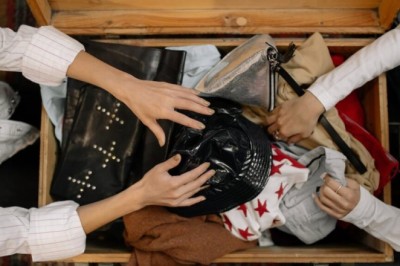


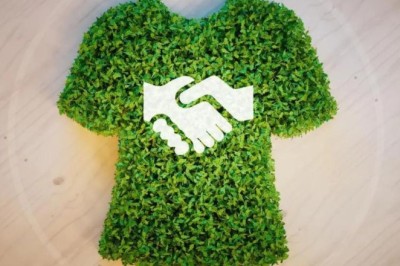
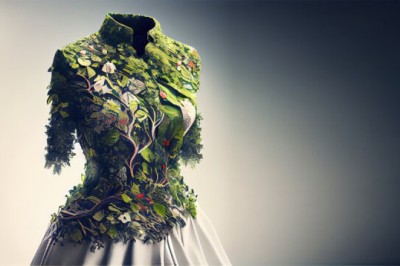
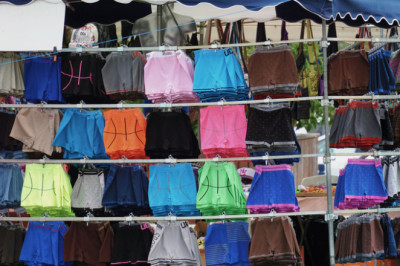



Comments
0 comment